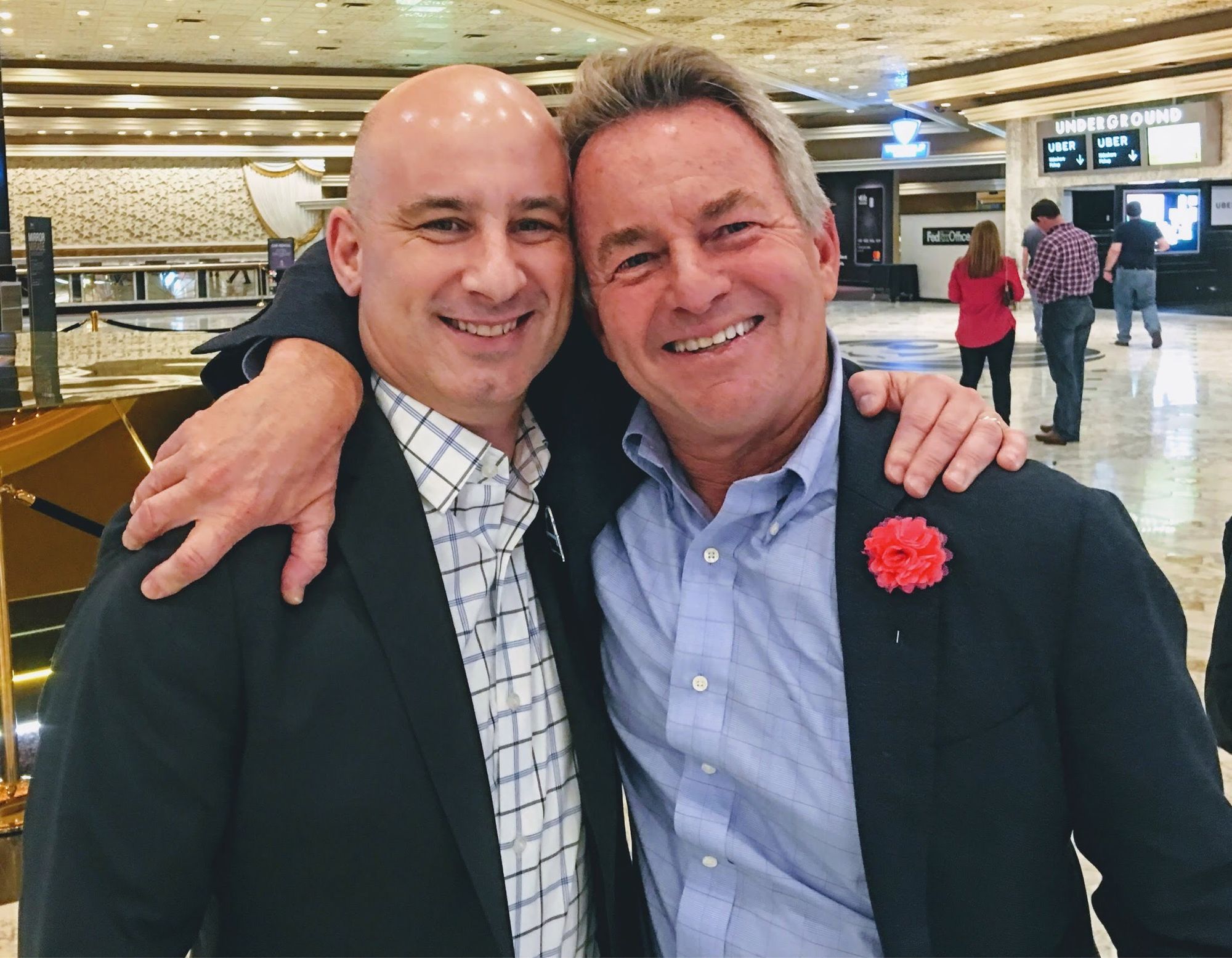Sales Development for Founders
Part 2: Key areas for founders to consider, when building a sales development organization.

This is Part 2 of a cross-post from "Lyndsay's Newsletter" by Lyndsay Kerwin, a VP at Silversmith Capital Partners. Lyndsay and I discussed how SaaS founders can consider the need for a sales development organization.
The original article from January 2023 is here. If you like what you read, subscribe to Lyndsay's Newsletter.
This is the second part of a conversation with sales leader Ralph Barsi about sales development (Part 1 is available here).
Ralph shares important insights on how scaling sales development representative (SDR) teams can help SaaS companies be capital efficient, the right and wrong KPIs for SDR teams, common scaling mistakes, and questions that sales leader can anticipate in board or advisory discussions.
Why sales development is important for capital efficient SaaS companies
Lyndsay I'm working with a lot of bootstrapped companies or companies who are capital efficient, so I’m curious, how should a founder think about the value that the SDR team brings if they have limited budget, limited resources? Couldn’t they say, I have sales budget, should I just allocate it to the folks that close business?
Ralph Bootstrapped or otherwise, successful founders are capital efficient. Most are excellent planners, too. They maintain a balance between product and sales, among other functions.
When it comes to considering the value of a sales development team, founders' views on pipeline must align with the company's mission. If, for example, qualifying, generating, and maintaining a viable pipeline is paramount in keeping the lights on, then the answer is to preserve the SDR team.
Once that is established, resources appear. Perhaps it's worth outsourcing the function, or hiring a team for the short-term, or requiring salespeople to own the entire lifecycle of their deals.
Exercising without eating healthy degrades, decays, and depreciates your nervous system, muscles, and bones. You’ve got to add fuel to the engine if you want to experience the journey.
How founders can set their sales development teams up for success
Lyndsay Once a founder has started to hire SDRs, what can they do to set their SDR team up for success?
Ralph Once founders start to hire SDRs, hiring an SDR leader is the best way to set the team up for success.
The best SDR leaders establish systems, so SDRs can repeatedly produce pipeline and develop the skills that will carry them through their careers.
At the very least, founders and SDR leaders establish systems to...
Recruit, hire, and onboard top talent. Uninspired employees often leave their leaders vs. their companies. The same applies to why inspired employees join companies: to work with and learn from great leaders. Founders and SDR leaders must develop their brands in the marketplace, so they can attract top talent vs. pursue it.
Train and enable the SDR team, all the time. SDRs must master the craft of sales development. Excelling in everything from writing, speaking, and listening skills, to showing proficiency in product and market traits, to consistently performing well against quota, to understanding how companies are composed and operated, to strategizing and executing as if they're a role or two ahead of their current role. The best leaders get that, today, you need to foster the team of tomorrow.
Clarify and reinforce the company's mission and values. Standards will remain low unless founders and SDR leaders illustrate what's to be expected and tolerated. The tone is set when leaders lead by example. If the mission and values aren't demonstrated, discussed, or understood by the SDRs, they won't represent the company, or themselves, well.
Recognize the SDRs’ good work. Tout their wins, attention to details, delightful first impressions with prospects, and collaboration with other business functions. Share the love on LinkedIn, in front of the greater organization, and 1:1 with the SDRs themselves. It'll breed loyalty, commitment, inspiration, and results.
Lyndsay When you say the founder should set that ‘north star,’ how should they translate that to sales, as opposed to thinking a sales team should be focused only on stats such as booked meetings and ARR?
What are examples of ways you've seen a founder really communicate the company goal in a way that sets sales up well?
Ralph In the mid 2000s, I attended a conference where the late Dr. Stephen Covey (author of 7 Habits of Highly Effective People) was the keynote speaker.

He had all 250 of us stand up. "Take your left hand and cover your eyes," he said. "Take your right hand and point north. Keep pointing but take your left hand off your eyes. Look around the room: WHICH WAY IS NORTH?"
Of course, fingers were pointing in every direction - up, down, left, right, backwards.
“This,” Covey said, “is how most organizations are run. Everyone THINKS they know which way north is, but they don’t. This is where leadership is needed.”
Telling a team its north star is a pipeline target of 3x the ARR target, or 120% net retention, or winning business from a % of the Fortune 100 is a table stake. Reinforcing where north is, though, is paramount.
I’m partial, since I’ve only worked in sales throughout my career. Every north star relates to, and requires, sales. Nothing moves forward if new business doesn’t come in, or if customers don’t expand from your offering. Somehow, some way, you need sales to reach the north star.
The best example I’ve seen of a founder communicating a company goal was at ServiceNow. Founder Fred Luddy often spoke at our company all hands meetings and sales kickoffs.
He reminded us to help our customers solve problems, create experiences for them that were seamless, and to do it all with humility and care. That foundation underpinned everything we did in achieving our goals.

Lyndsay That makes a lot of sense. Every company started to solve a customer problem or enable some opportunity.
Ralph Yes, and they want to do it well, so most companies aim to acquire top talent. They want A-players to represent them well - in the industry, in the field, and across the organization.
In turn, A-players want to play for A-player coaches and A-player teams, which is another reason founders and leaders drive a mission, drive standards, drive systems, and share the journey. It’s what inspires and attracts the A-players to want to carry the torch.
The right and wrong KPIs for sales development teams
Lyndsay With all of that in mind, what KPIs should be tracked? How should that evolve as a team ramps and scales?
Ralph You can't win if you don't keep score. Here are effective KPIs for sales development teams, regardless of what stage of growth you're at:
• $ pipeline per head + segment + region + pod
• % of opps that advance past Stage 3+
• % of target accounts engaged
• # of meetings booked (that occur)
• % of heads hired, ramped, promoted, retained
Note that functional SDR teams require qualification criteria, for meetings SDRs schedule for prospects and account executives (AEs).
Oftentimes, when SDRs tee up a qualified meeting for an AE, the AE will accept or reject it based on the criteria met. As the operation scales, this metric never goes away. It's a staple. Over time, metrics like pipeline dollar amount per head or market segment - or per territory or product offering - get added to the list.
Much depends on the size and maturity of the team. Those are a few, however, key performance indicators to consider.
Lyndsay Doubling back on that point, what's the problem with focusing only on booked meetings? Where does that fall down?
Ralph It's a big problem when that's the sole focus. There are a couple of reasons why that's a problem. Here's what happens when qualification criteria aren't in place...
For starters, a lot of reps mistake someone with a pulse, who's willing to speak with us, for a prospect in an active buying cycle. In reality, that is rarely the case, as a majority of prospects simply aren't looking to buy.
Reps need to make a number, though, so they get happy ears. The result is, a company's top-of-funnel gets inflated with early stage prospects that will never convert.
It leads to a bloated pipeline that's unqualified, forecast inaccuracy, and underachievement across the board. All bad. Don't focus only on booked meetings.
Lyndsay How can founders benchmark all of those numbers? Any sources you'd recommend?
Ralph Absolutely. There are solid sources out there. One, for example, the Sales Development Benchmark Report from TOPO. It was published in 2019, prior to TOPO getting acquired by Gartner.
SDR leaders still reference data from that report today. It organizes companies by size and average sales price, and offers a host of metrics to use. TOPO had a mantra of "specificity wins" that's rings true throughout that ol' benchmark report.
Another killer resource is the Account-Based Sales Development (ABSD) model by Lars Nilsson. It guides SDR leaders on how to build a viable revenue pipeline from running proactive, multi-touch campaigns into target accounts.
Similar to the TOPO report, the ABSD model is centered on a company's average sales price, growth phase, and average sales cycle. A must read.
Common challenges in scaling SDR teams
Lyndsay Awesome, really helpful. Thanks for the resources. Back on our discussion about scaling teams, any other common pitfalls or mistakes that you see?
Ralph Two immediately come to mind with sales development teams.
1. Obscure leaders. As we talked about earlier, most people join teams for the same reason they leave those teams - because of the leader. It's difficult, then, when SDR candidates can't find any information on their hiring manager. Chances are, the candidates will take their skills elsewhere, where the SDR leader uses a personal brand to attract top talent.
2. Weak recruiting processes. A nice segue from the obscure leader pitfall, candidates sometimes apply to companies with lame recruiting processes. Interview cycles are vague, the vetting phase is too short (1-2 days) or too long (months), follow-up and follow through from the hiring team is rare, and feedback is thin and automated.
Other pitfalls are a lack of onboarding and enablement programs, unclear career paths, and cultures with low standards. Yuck.
Lyndsay Those are great. On your first point, does a leader need to be vocal externally or can this take place through internal channels such as Slack, all hands meetings, things like that?
Ralph Yes, of course. If they're not comfortable or they just have no interest in building their brand outside the company, but are doubling down internally and are very visible and transparent, that counts.
Leaders who roll like that have as much credibility and rapport as the ones who are vocal in the industry. Also, if their work is mostly or 100% internal, those leaders become indispensable to the business...and the word will get out. Their reputation will still precede them.
SDRs working for this type of leader will tell their friends, "Hey, you want to work for her. She's top notch and someone I'm constantly learning from. You'll want to find out as much as you can and interview with us when the opportunity presents itself."
Discussing sales development with a startup’s board or advisors
Lyndsay How about during a board meeting or a discussion with a company's advisors, what should an SDR team lead present? What questions should they expect?
Ralph The sales development function isn't often represented in board meetings. However, the pipeline they produce is.
The best board members know that sales development teams play an integral role in driving a revenue pipeline that's repeatable, predictable, and healthy. SDR leaders usually inform the CRO of results, as well as the systems and mechanics behind the results.
Years ago, a sales leader told me to stop reporting on the weather, and to, instead, predict it.
If a sales development leader can step into a board meeting and predict the productivity, efficiency, and effectiveness of the SDR function, board members will have a high level of confidence in continuing to scale the function.
Lyndsay How can I be helpful with all of this as a board member?
Ralph Help us leverage your network and expertise.
Board members have rich relationships and deep experience. SDRs are always researching accounts and personas, and would be surprised at how often a board member has a first degree connection to those same accounts or personas.
The best SDRs help the board members help them. It might mean writing a brief introductory email for the board member to tailor, edit, and forward. It could mean nudging board members to intervene in active pipeline opportunities.
Board members can also give advice, guidance, or coaching when necessary. The board is an invaluable resource to SDR teams, when tactfully approached.
Lyndsay Those direct connections that lead to deals.
Ralph Exactly. Look, we know and respect that the board has limited bandwidth. If there's ever an opportunity, though, when a board member can parachute-in to a team meeting or daily standup, it's pure gold to the SDRs.
It pays in spades when anyone from the board says hello to the team, lets them know they're aware of the work the SDR function is doing, or, perhaps sheds light by sharing insights, stories, or tales from their career. Again, pure gold.
Lyndsay Thank you, Ralph!
Ralph Thank YOU, Lyndsay. All the best to you and the Silversmith community.